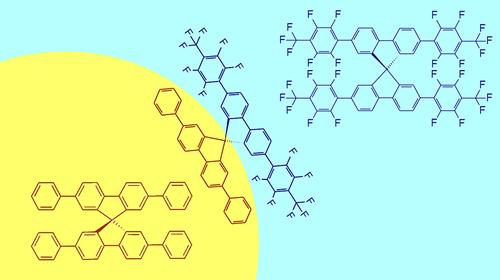当前位置:
X-MOL 学术
›
J. Phys. Chem. B
›
论文详情
Our official English website, www.x-mol.net, welcomes your
feedback! (Note: you will need to create a separate account there.)
Phase Separation and Nanostructure Formation in Binary and Ternary Blends of Spiro-Linked Molecular Glasses.
The Journal of Physical Chemistry B ( IF 2.8 ) Pub Date : 2020-06-04 , DOI: 10.1021/acs.jpcb.0c02360 Michael Grimann 1 , Roman Ueberschaer 1 , Evgeny Tatarov 1 , Thomas Fuhrmann-Lieker 1
The Journal of Physical Chemistry B ( IF 2.8 ) Pub Date : 2020-06-04 , DOI: 10.1021/acs.jpcb.0c02360 Michael Grimann 1 , Roman Ueberschaer 1 , Evgeny Tatarov 1 , Thomas Fuhrmann-Lieker 1
Affiliation

|
Understanding phase separation phenomena in blends of organic electron acceptor and donor materials is of special interest in the context of organic optoelectronic applications. In this study, we focus on the phase behavior of a special class of spiro-linked compounds, which serve as model systems for morphological control in phase-separated small-molecule electron donor–acceptor blends. Thermal analysis and quantitative image analysis were the key techniques for developing a suitable approach for modeling the phase diagram with minimal material consumption. We report an uncommon miscibility gap in the liquid and glassy phase and show that the phase diagram can be modified by addition of a third, ambipolar compound in analogy to ternary A/B/AB polymeric blends. For an exemplary ternary system, a bicontinuous morphology with a pattern length scale of a few tens of nanometers was realized in the bulk that verifies the applicability of this approach to morphology control.
中文翻译:

螺旋连接分子玻璃的二元和三元混合物的相分离和纳米结构形成。
在有机光电应用的背景下,了解有机电子受体和施主材料的混合物中的相分离现象尤为重要。在这项研究中,我们重点研究一类特殊的螺环连接化合物的相行为,该化合物可作为相分离的小分子电子供体-受体混合物中形态控制的模型系统。热分析和定量图像分析是开发以最少的材料消耗为模型建立相图的合适方法的关键技术。我们报告了在液相和玻璃态中不常见的混溶间隙,并表明可以通过添加类似于三元A / B / AB聚合物共混物的第三双极性化合物来修改相图。对于示例性三元系统,
更新日期:2020-07-02
中文翻译:

螺旋连接分子玻璃的二元和三元混合物的相分离和纳米结构形成。
在有机光电应用的背景下,了解有机电子受体和施主材料的混合物中的相分离现象尤为重要。在这项研究中,我们重点研究一类特殊的螺环连接化合物的相行为,该化合物可作为相分离的小分子电子供体-受体混合物中形态控制的模型系统。热分析和定量图像分析是开发以最少的材料消耗为模型建立相图的合适方法的关键技术。我们报告了在液相和玻璃态中不常见的混溶间隙,并表明可以通过添加类似于三元A / B / AB聚合物共混物的第三双极性化合物来修改相图。对于示例性三元系统,











































 京公网安备 11010802027423号
京公网安备 11010802027423号